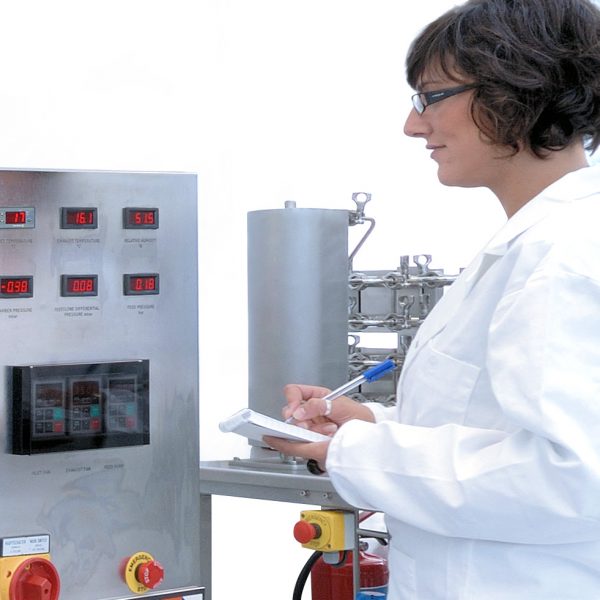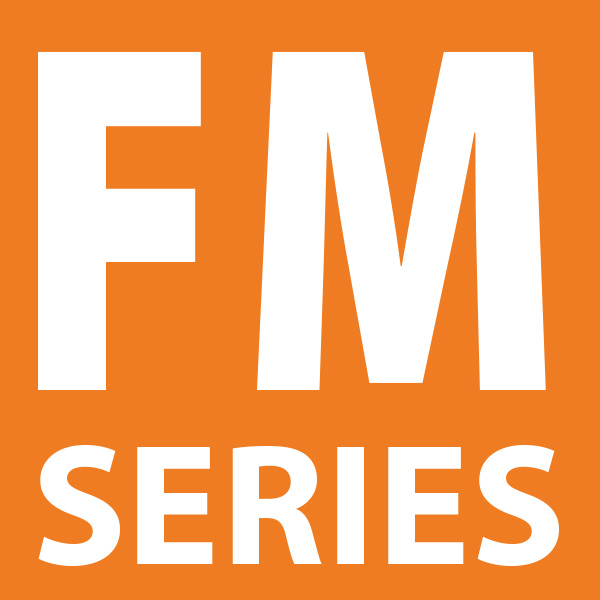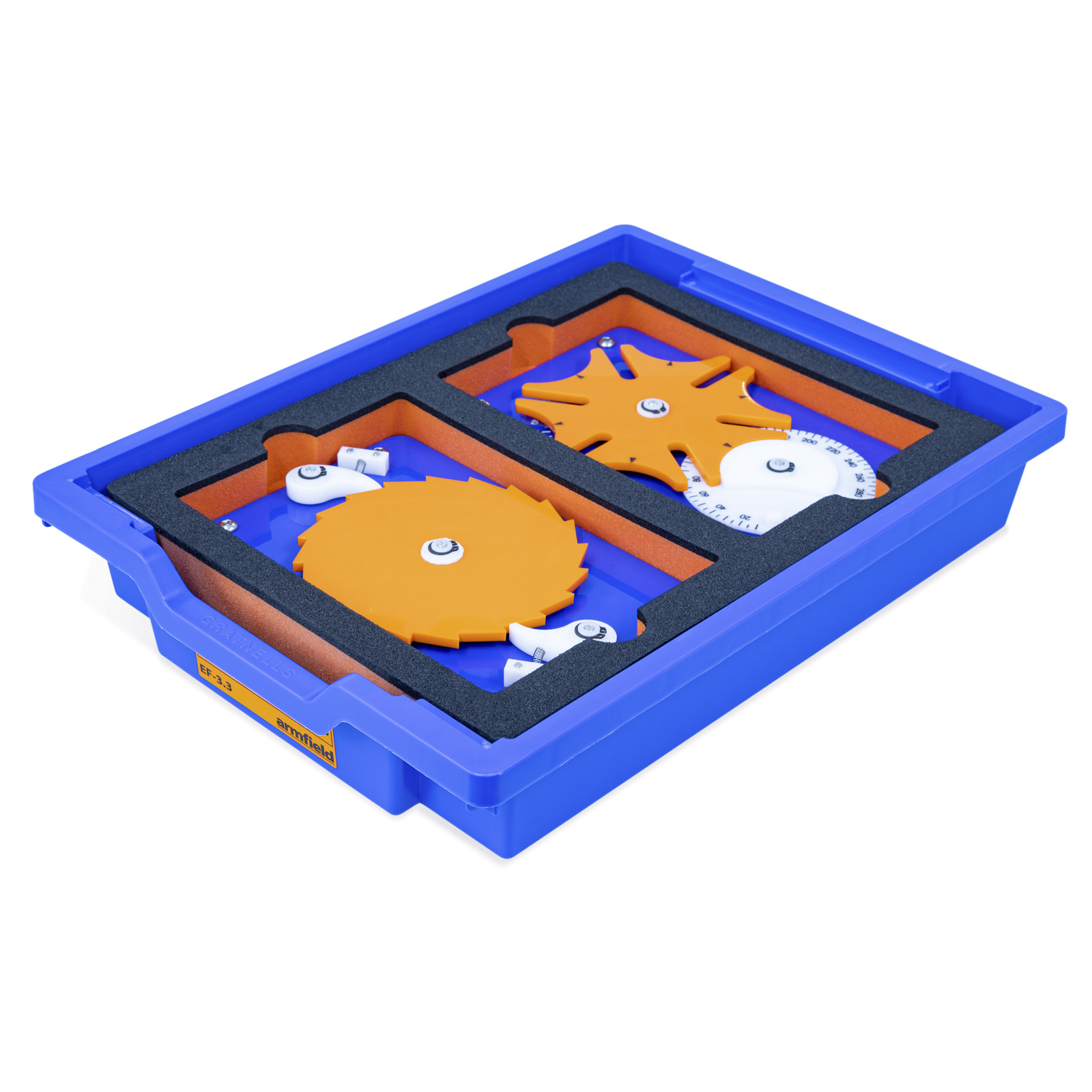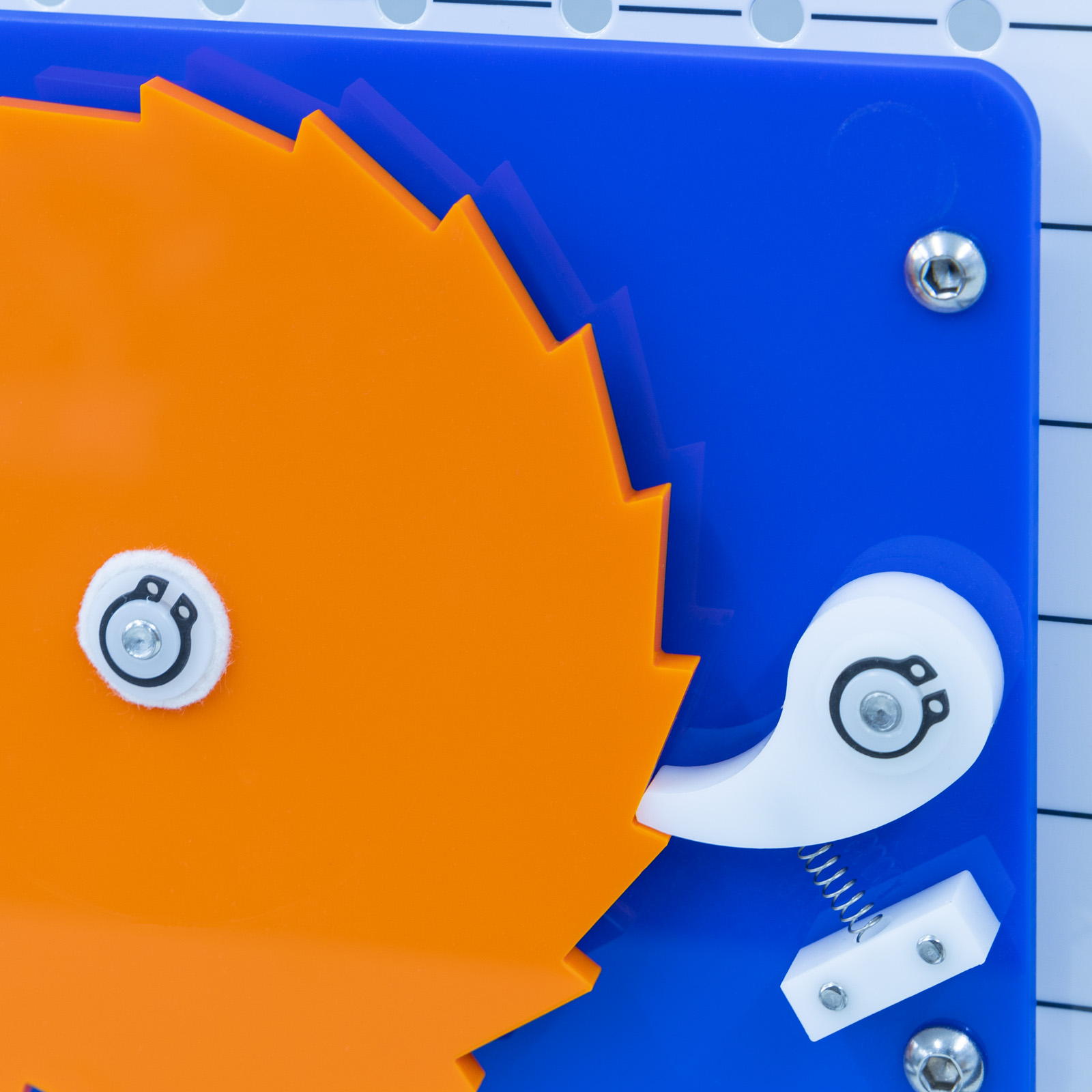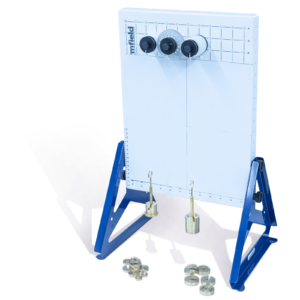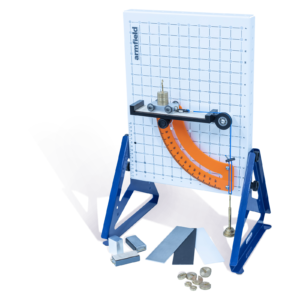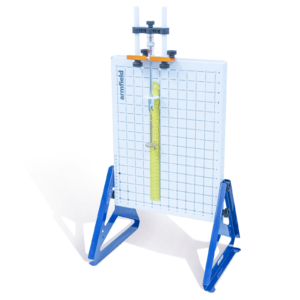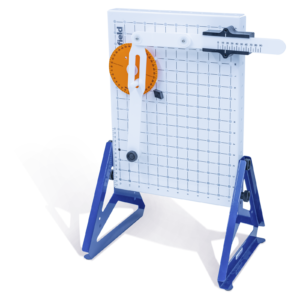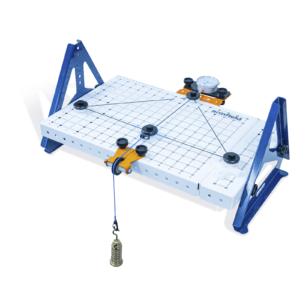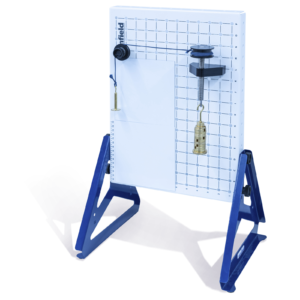EF-3.3 – Mechanisms – Additional Mechanisms
The EF-3.3 Additional Mechanisms experiments kit provides students with an introduction to conversion of motion using a Ratchet and Geneva mechanism.
Description
The Engineering Fundamentals range enables students to gain an understanding of the principles of engineering by the process of learning via experimentation.
The EF-3.3 Additional Mechanisms experiments kit provides students with an introduction to conversion of motion using a Ratchet and Geneva mechanism.
The Geneva mechanism is a gear mechanism that translates a continuous rotational movement into intermittent indexed rotary motion, with accurately locked location of the driving component. Such mechanisms are frequently used in mechanical watches, film movie projectors and movie cameras.
A Ratchet mechanism allows for continuous linear or rotary motion in one direction while preventing movement in the opposing direction. Such mechanisms are widely used in machinery and tooling such as jacks, hoists, and socket wrenches.
Technical Specifications
Features & Benefits
Features
- Neatly presented in an easily identifiable and durable storage tray
- Trays have clear lids making it easy to see their contents
- Pictorial tray contents list to identify missing components easily
- Accompanied by a detailed manual with various practical exercises
- Clear and concise assembly instructions for each experiment
- Multiple experiments per kit
- Toolless assembly
Benefits
- Hands-on understanding from lessons
- Improve the student’s dexterity by self-assembly with the instructions provided
- Conversion of motion using the Geneva mechanism
- Conversion of motion using a ratchet mechanism
- EF-BU Base Unit
- Statics Experiments
– EF-1.1 Forces
– EF-1.2 Moments
– EF-1.3a Beams
– EF-1.3bTrusses
– EF-1.4 Springs
– EF-1.5 Torsion
- Dynamics Experiments
– EF-2.1 Friction
– EF-2.2 Simple Harmonic Motion
– EF-2.3 Rotational Friction
– EF-2.4 Potential and Kinetic Energy
– EF-2.5 Centrifugal and Centripetal Force
- Mechanisms Experiments
– EF-3.1 Cam, Crank and Toggle
– EF-3.2 Simple Mechanisms
– EF-3.3 Additional Mechanisms
– EF-3.4 Bar Linkages
- Kinematics
– EF-4.1 Pulleys
– EF-4.2 Gears
– EF-4.3 Drive Systems
- Strength of Materials
– EF-5.1 Tensile Tester
- Options
– EF-WS Workstation
- Geneva mechanism assembly
- Pawl and ratchet assembly
- EF-BU Base Unit
- EF-BU on which to build the experiment from the tray components
- Level and stable work surface to mount the EF-BU upon. The optional EF-WS is ideal for this if no suitable desk or bench is available.
PACKED AND CRATED SHIPPING SPECIFICATIONS
Volume: 0.02m³ per tray
Gross Weight: 5.0kg per tray
Tray
Length: 0.430m per tray
Width: 0.312m per tray
Height: 0.080m per tray
- EF-3.3 – Additional Mechanisms
- EF-BU – Base Unit
- EF-WS – Workstation (optional)



